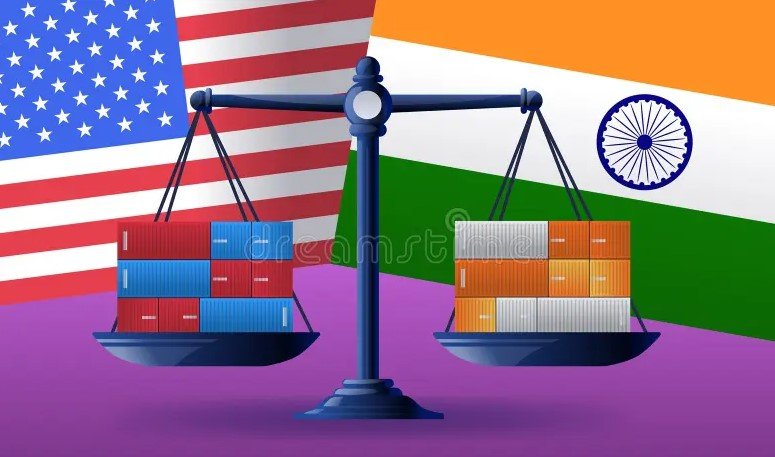U.S. Customs enforces sweeping hikes on imported goods as allies brace for impact, and Trump signals no tariff rollback linked to Ukraine
Just after midnight on August 7, U.S. Customs and Border Protection quietly began collecting what could become the most consequential set of import taxes in recent American history. With no public fanfare, but plenty of tension behind the scenes, President Donald Trump’s new tariffs—ranging from 10% to 50%—took effect on dozens of America’s largest trading partners, including India, the European Union, Mexico, Japan, and South Korea.
The shockwaves are already rippling through ports, supply chains, and diplomatic backchannels. And Trump? He’s not blinking.
From talk to tariffs—Trump’s strategy kicks in
For weeks, importers had been holding their breath. Trump’s second-term push to shrink the trade deficit had been talked about, teased, and even temporarily paused due to quiet lobbying from global allies.
But now, there’s no more waiting.
As of 12:01 a.m. EDT Thursday, the tariffs are active. The new levy applies to a sweeping list of goods—consumer electronics, auto parts, pharmaceuticals, steel, textiles, and even some agricultural products.
Why now? A senior administration official told reporters on background: “The President believes the U.S. has been taken for a ride for too long. This puts America first. Period.”
India hit hard, Delhi fumes
India, one of the fastest-growing trade partners for the U.S., found itself among the worst hit. Several key exports—generic medicines, textiles, aluminum, and auto components—are now subject to a flat 25% tariff, with some categories reaching as high as 40%.
The Indian Ministry of Commerce issued a terse response on Thursday morning: “We are evaluating our options, including reciprocal tariffs. We hope the United States will reconsider this unfriendly step.”

One sentence, but loaded with irritation.
Indian exporters are scrambling. For pharma companies like Dr. Reddy’s and Sun Pharma, which rely heavily on the U.S. market, this could eat into profits quickly.
Will this hit your wallet?
Short answer: Yes. But how much depends on what you buy and where it’s made.
• Smartphones, laptops, and consumer electronics could see price jumps of 5–12% over the next quarter
• Car repairs might cost more, thanks to pricier foreign parts
• Textile imports could drive up clothing prices by 3–5%, say analysts
• Generic drugs? Some categories might see a spike if Indian supply contracts tighten
Companies are already warning of “price adjustments.” And no, that’s not code for discounts.
Here’s a quick breakdown of new U.S. tariff rates by category:
| Sector | Previous Tariff | New Tariff (Effective Aug 7) | Top Affected Countries |
|---|---|---|---|
| Auto components | 2.5% | 25%–35% | Mexico, India, Germany |
| Pharmaceuticals | 0%–5% | 20%–30% | India, Ireland |
| Consumer electronics | 0% | 10%–20% | China, South Korea, Japan |
| Aluminum & Steel | 10%–15% | 40%–50% | Canada, India, EU |
| Apparel & Textiles | 7%–12% | 25% | Vietnam, India, Bangladesh |
It’s not a blanket hike. It’s targeted. Precision warfare, Trump-style.
Allies caught off guard—and furious
European Commission President Ursula von der Leyen called the move “deeply disappointing” in a press statement Thursday. Canada’s Trade Minister described the tariffs as “hostile and irrational.” Japan said it will lodge a formal complaint at the World Trade Organization.
Even Mexico, often willing to absorb economic shocks for political peace, is reportedly rethinking parts of its bilateral trade deal with Washington.
And India? New Delhi is said to be exploring fresh defense deals with France and Russia to “balance the strategic pressure” from Washington.
It’s not just trade. It’s trust. And that’s unraveling.
Trump shrugs off pressure, keeps India tariffs separate from Russia talks
In a brief White House press conference Thursday morning, Trump was asked if he would consider lifting tariffs on Indian goods as part of a broader negotiation over India’s position on the Russia-Ukraine war.
His answer? Classic Trump.
“We love India. Modi’s a great guy. But look, these tariffs—they’re about fairness, not about Ukraine. We’re not making deals. We’re setting rules.”
One sentence later, he added: “If India helps on Ukraine, great. But tariffs stay. For now.”
So no quid pro quo. At least not openly.
Wall Street stays nervous, for now
Markets responded with unease. The Dow opened 270 points lower Thursday morning, before recovering slightly. Export-heavy stocks like Tesla, Apple, and General Motors saw modest dips. Pharma stocks with Indian exposure, like Pfizer and Amgen, dropped between 2%–4%.
Currency markets also wobbled. The rupee touched a two-month low against the dollar amid fears of retaliation from India that could complicate foreign investment.
But not everyone’s panicking.
“There’s no panic selling yet,” said Jeff Kroft, senior economist at Cornerstone Macro. “But we’re watching inflation, import contracts, and the next few tweets.”
What’s next? Eyes on retaliation—and inflation
This isn’t the end of it. Far from it.
India and the EU are both said to be drafting retaliatory tariffs that could hit American tech, agricultural exports, and high-end goods. A senior Indian official hinted at possible restrictions on U.S. dairy and aircraft parts.
Inflation concerns are also brewing. With core goods potentially rising in price, the Federal Reserve will be under pressure to factor trade policy into its interest rate decisions later this year.
Trump, however, seems undeterred. “It’s about time someone fought back,” he said in a post on Truth Social. “America won’t be a piggy bank for the world anymore.”
That line—tweeted, echoed, printed, repeated—may define the second half of 2025.
